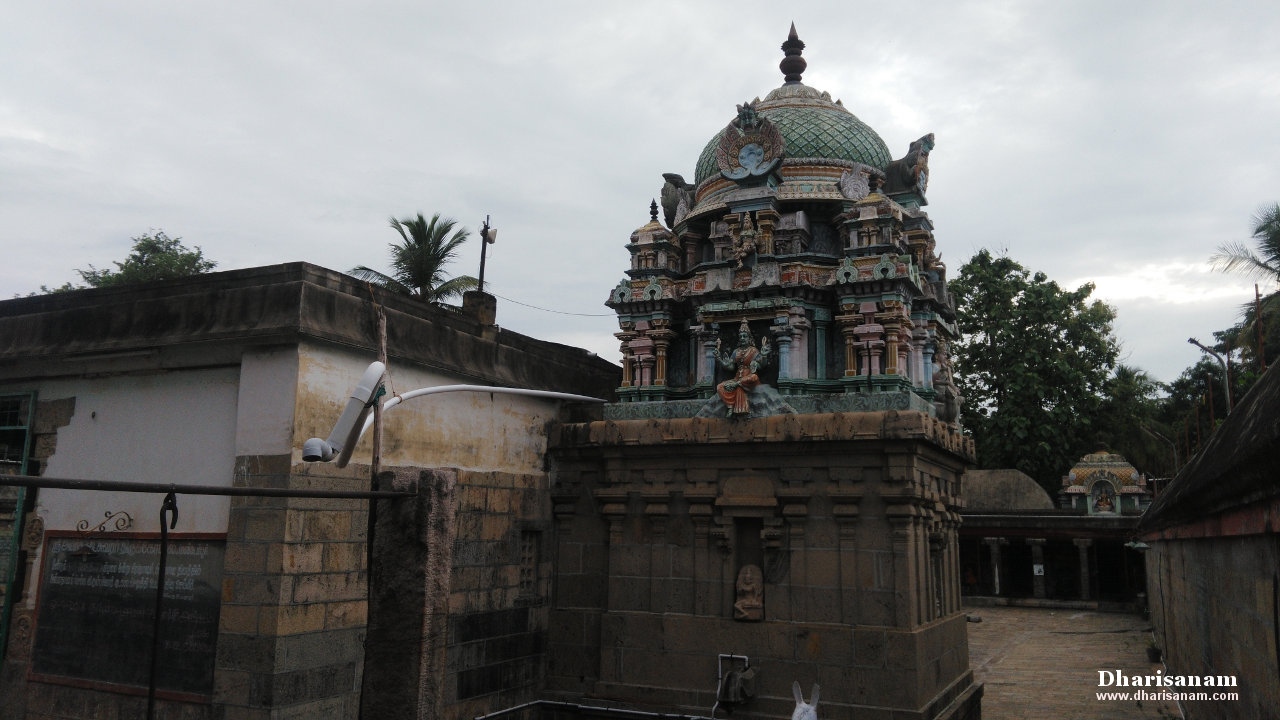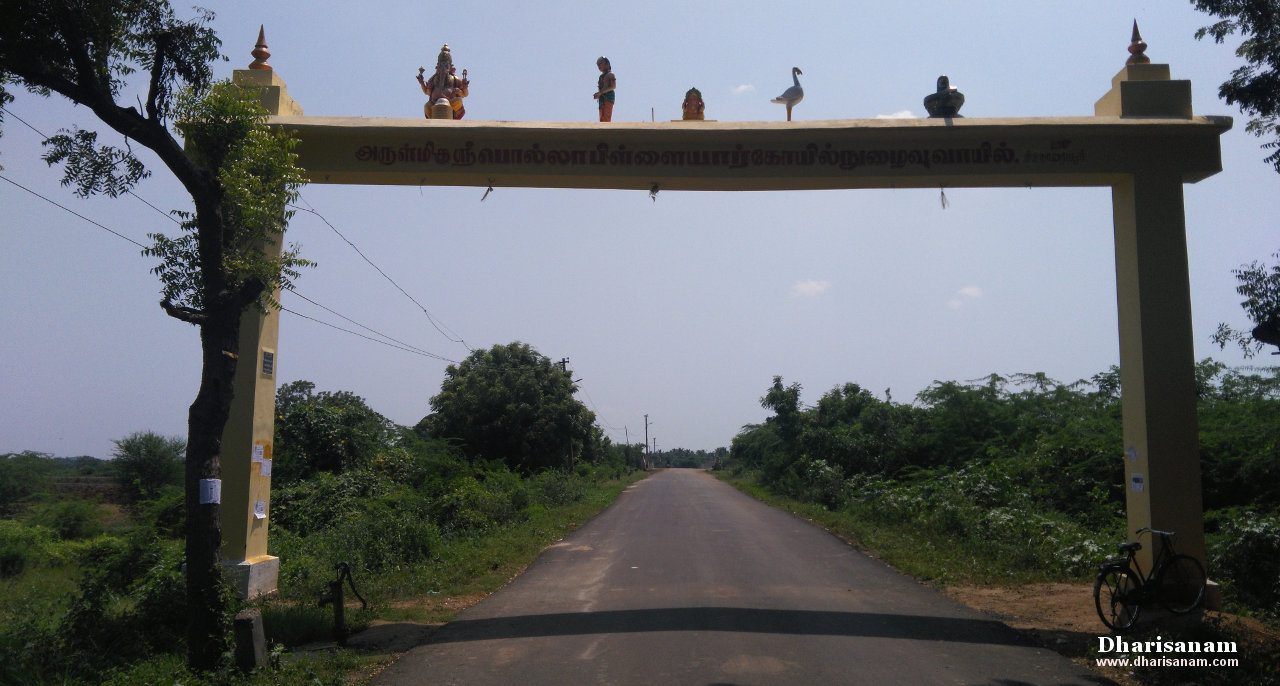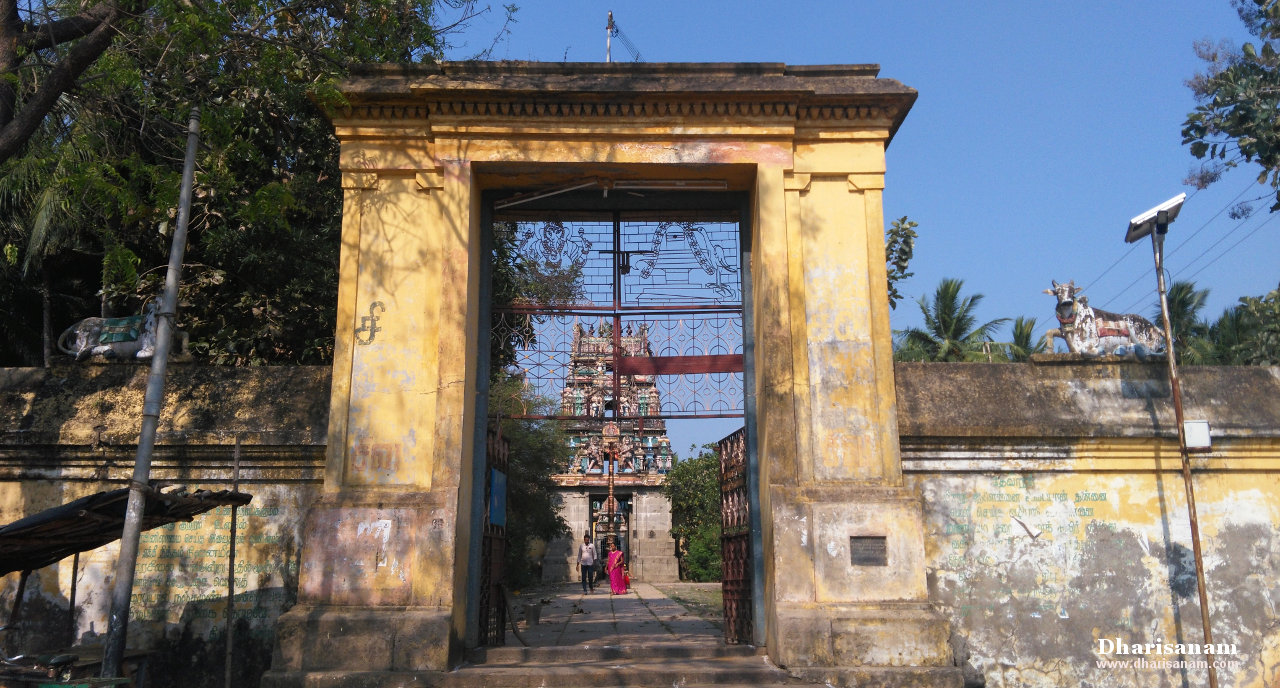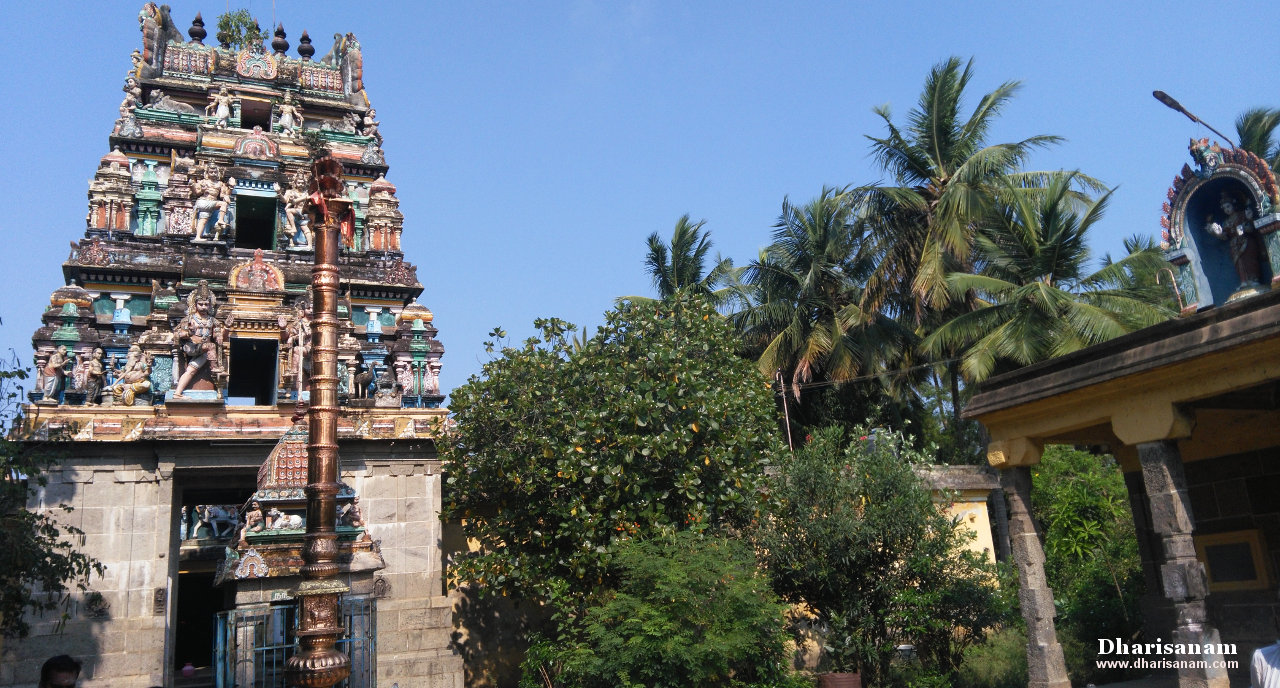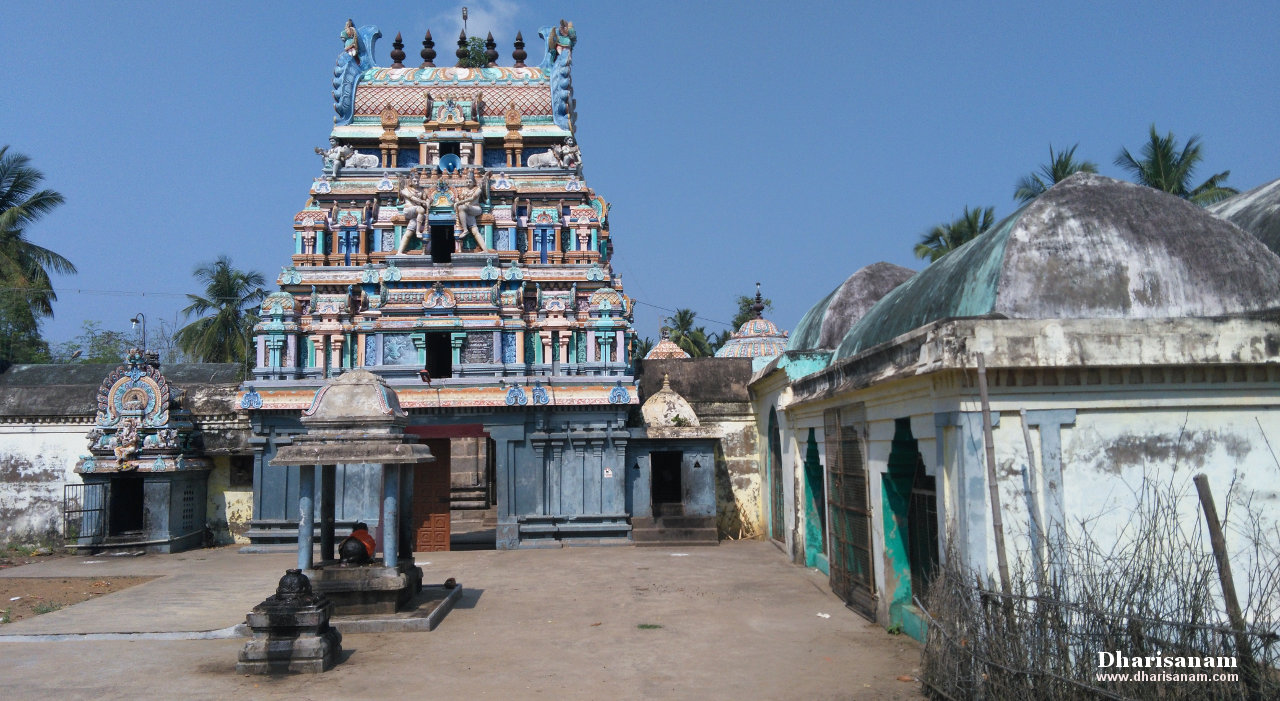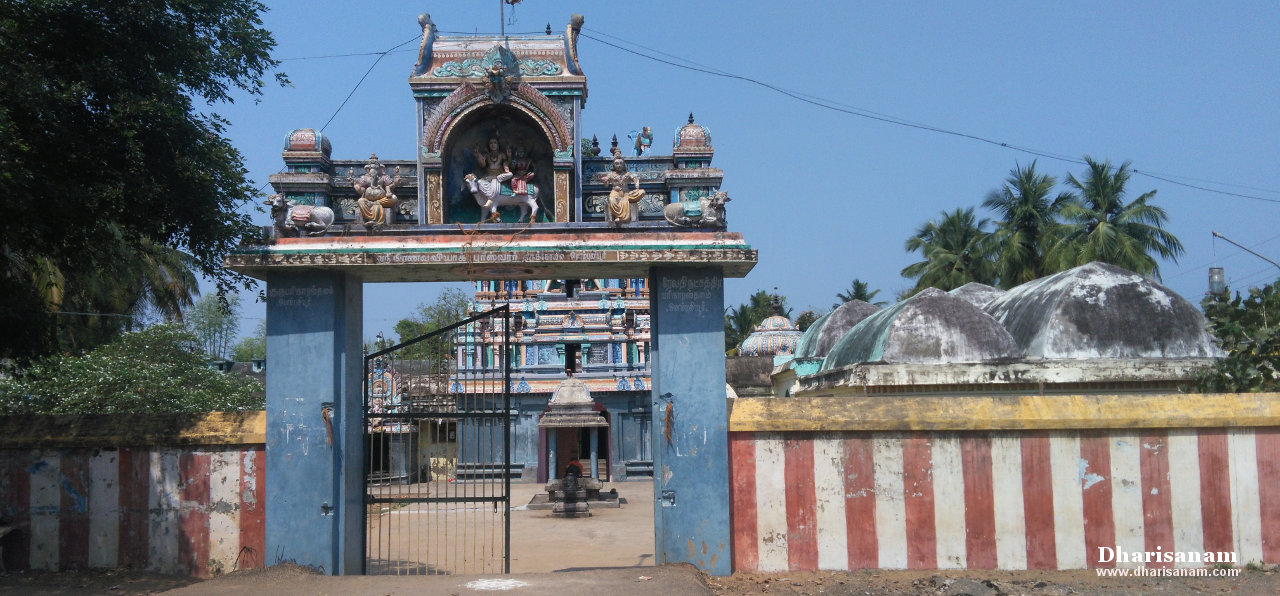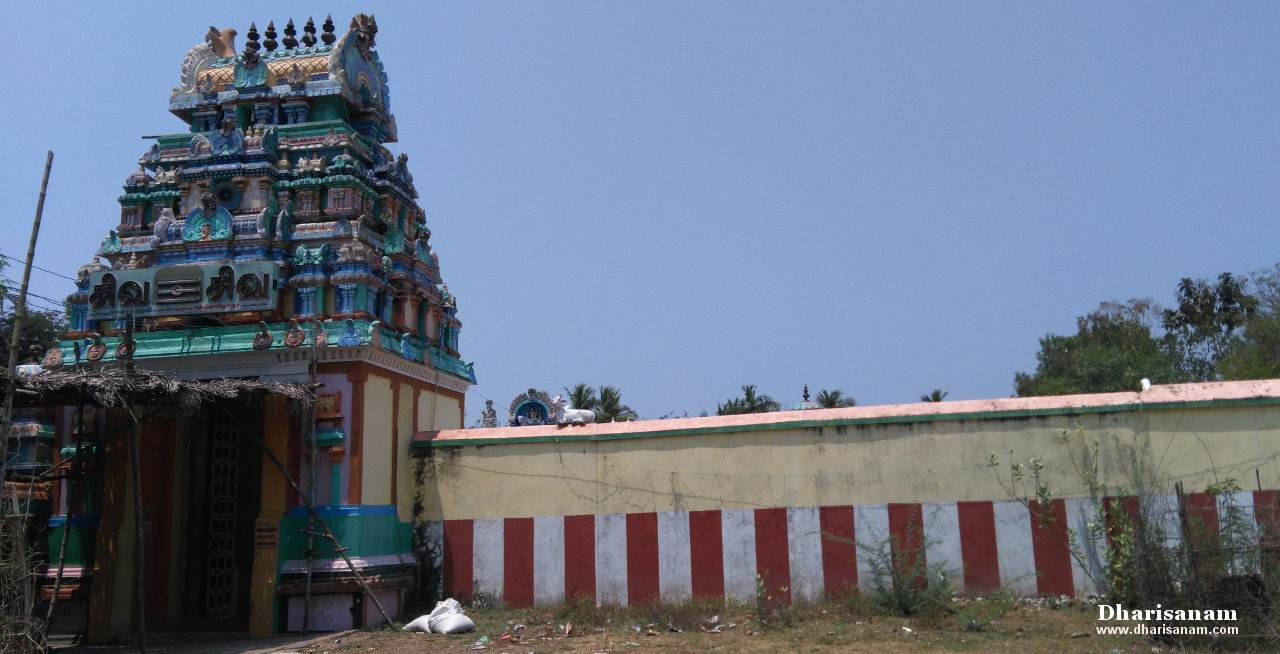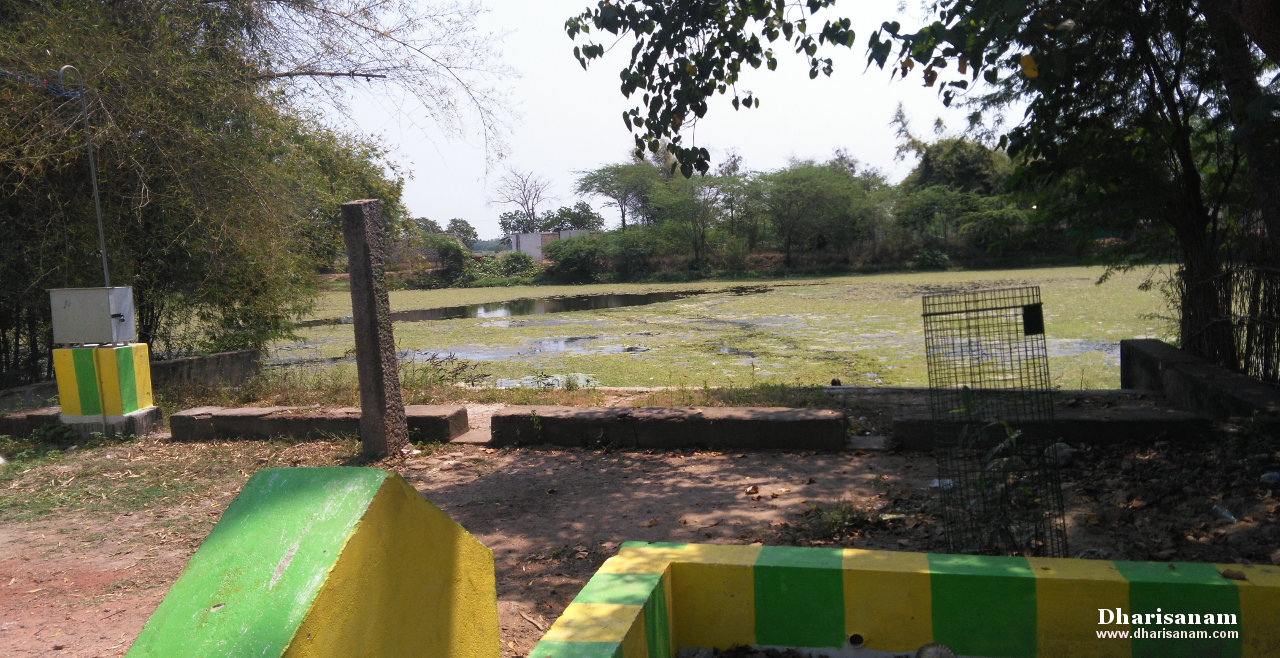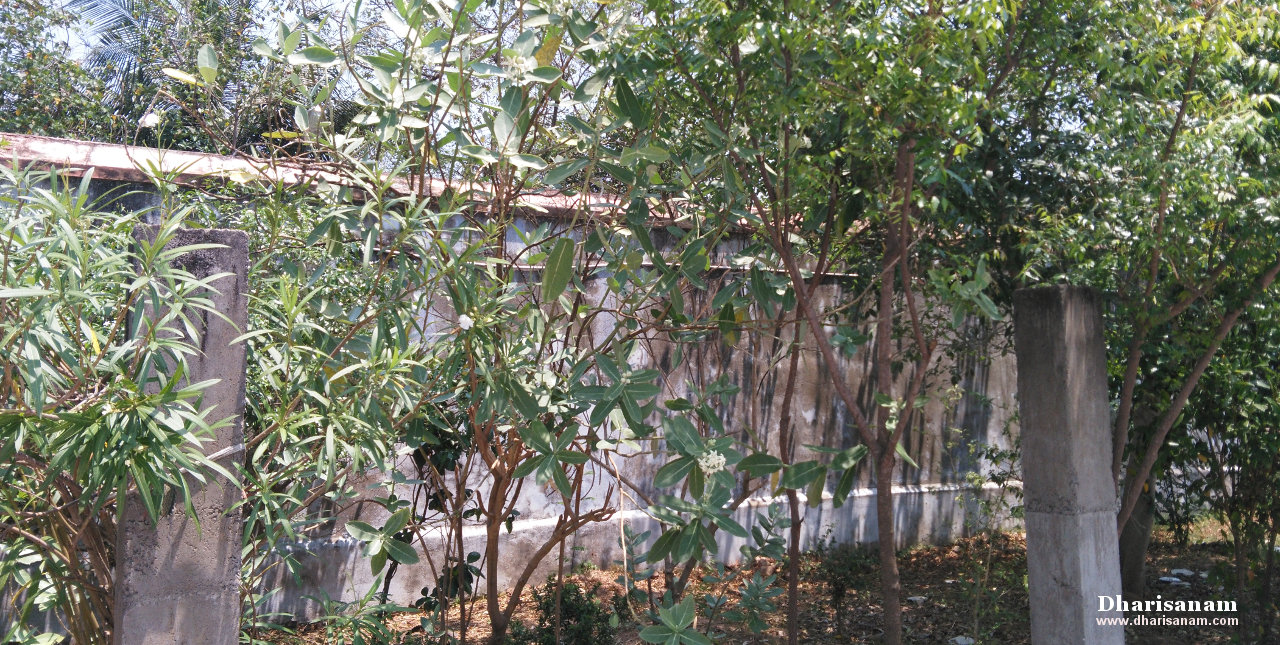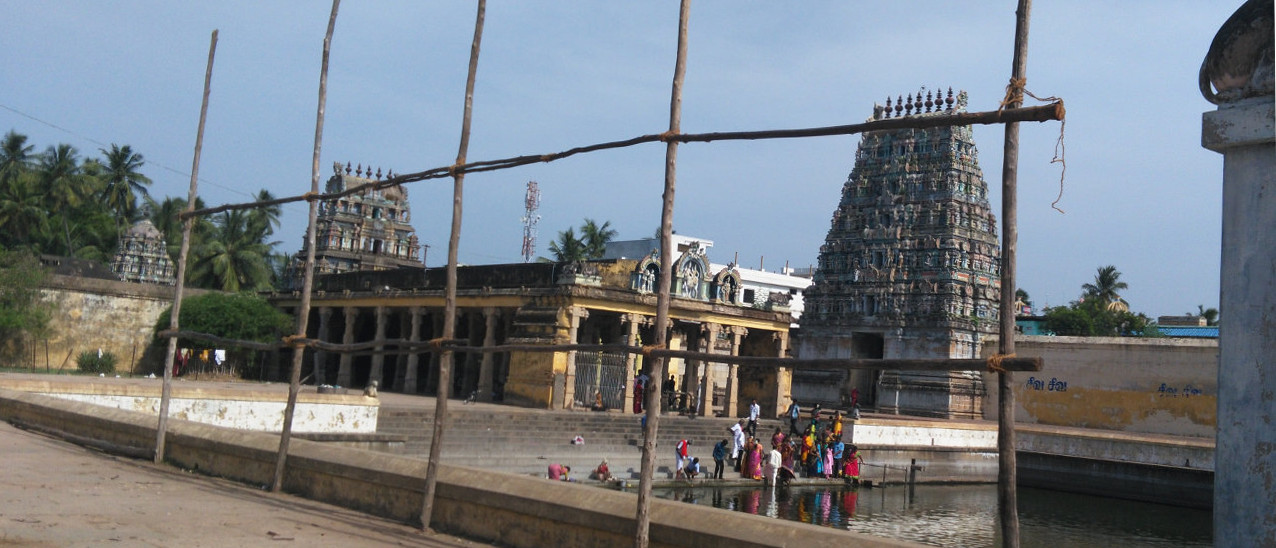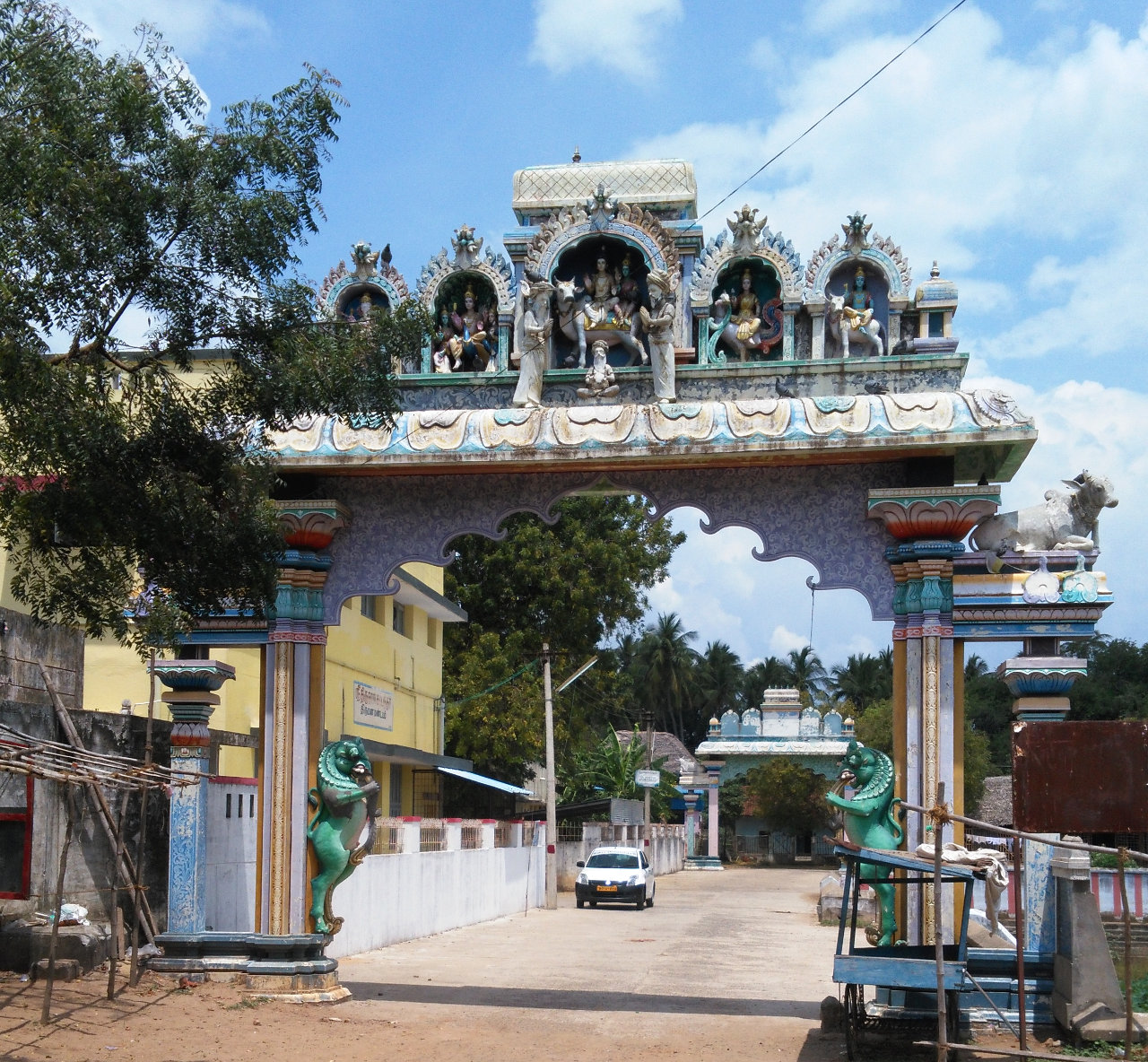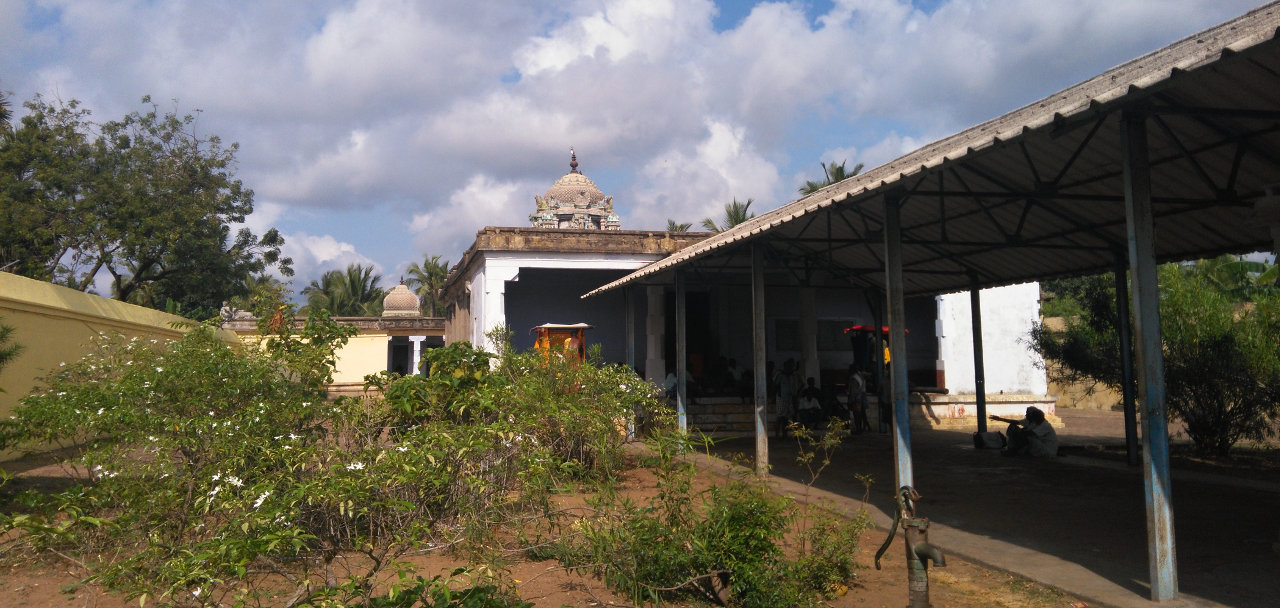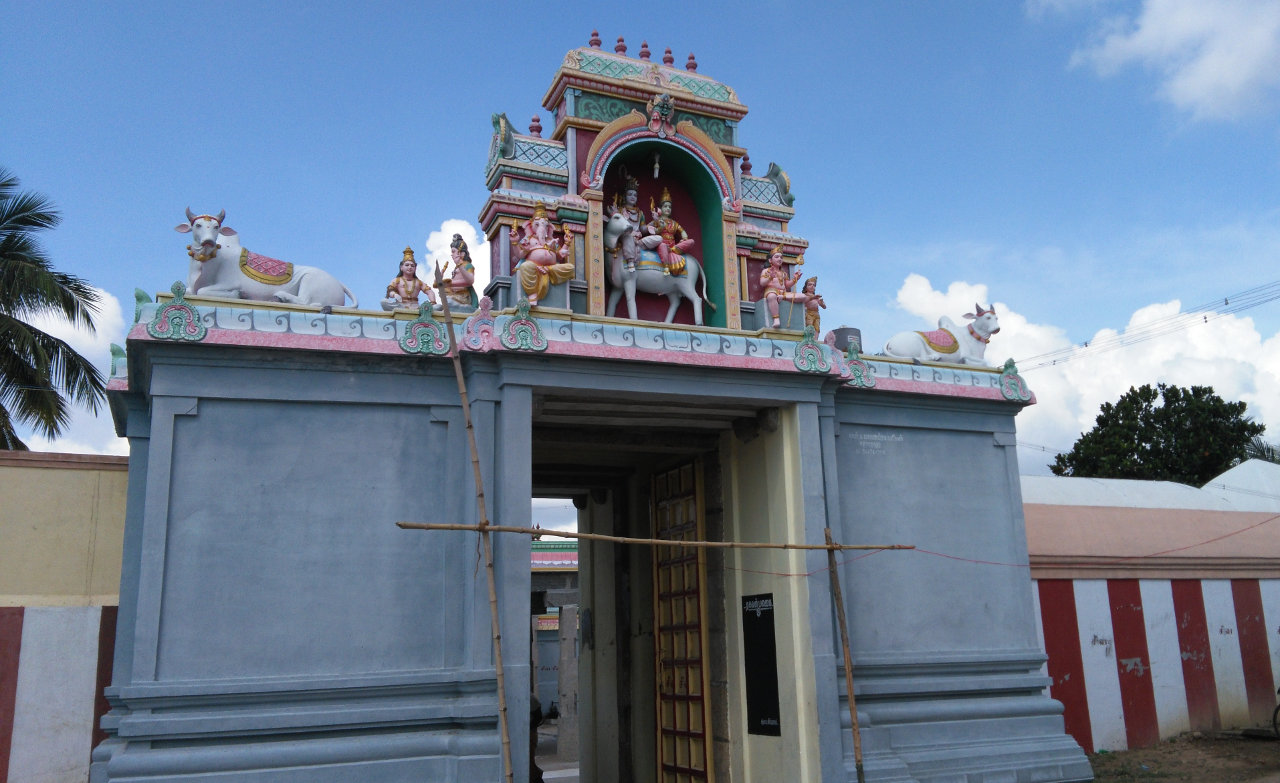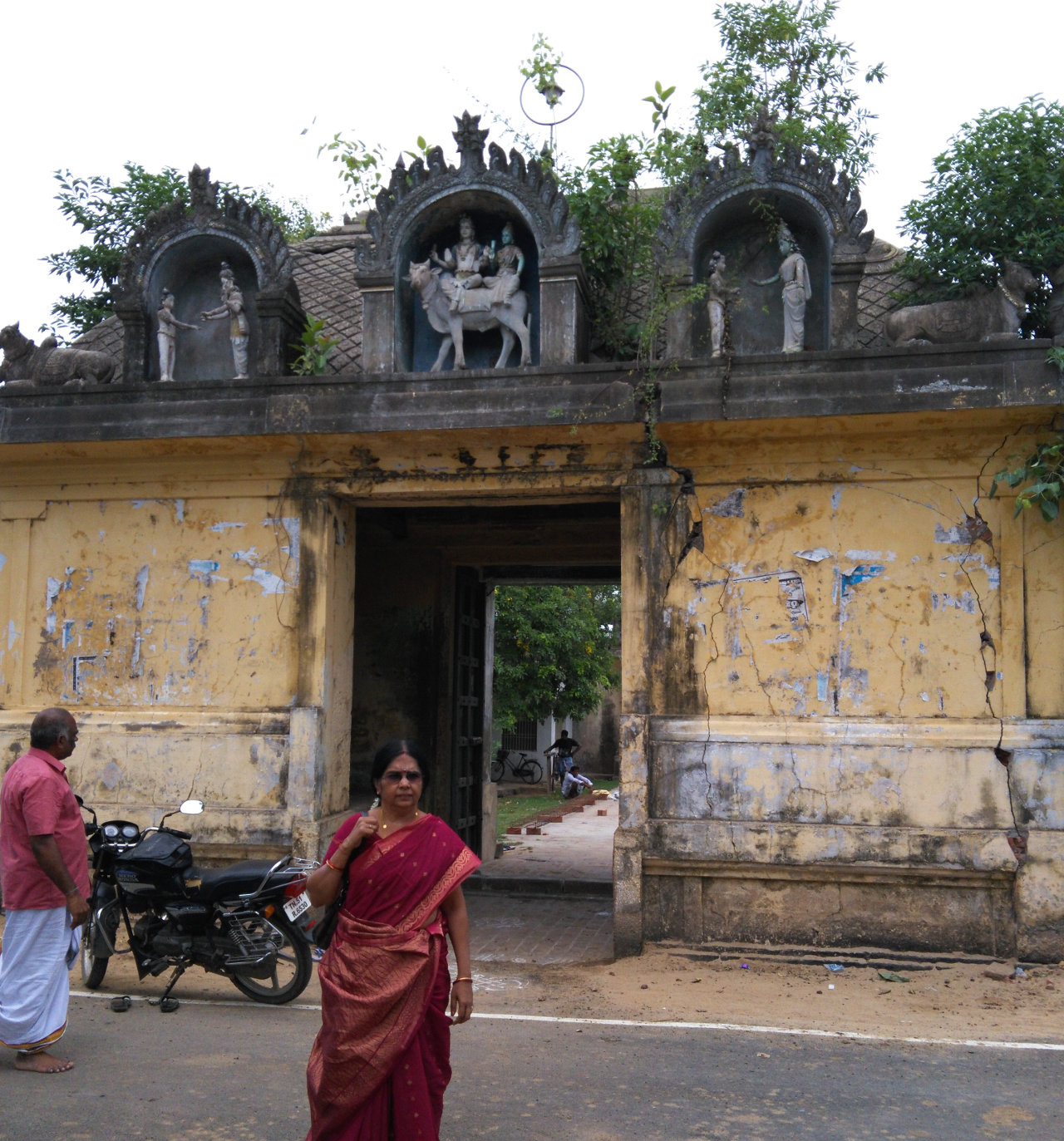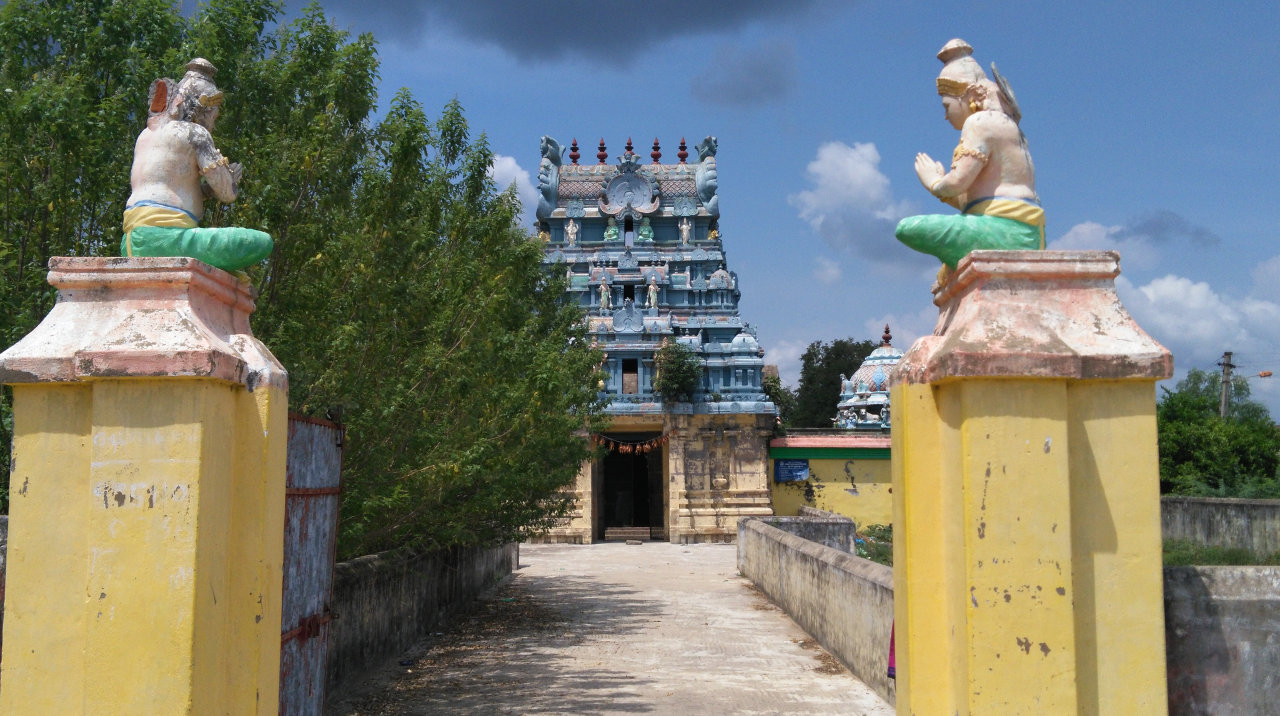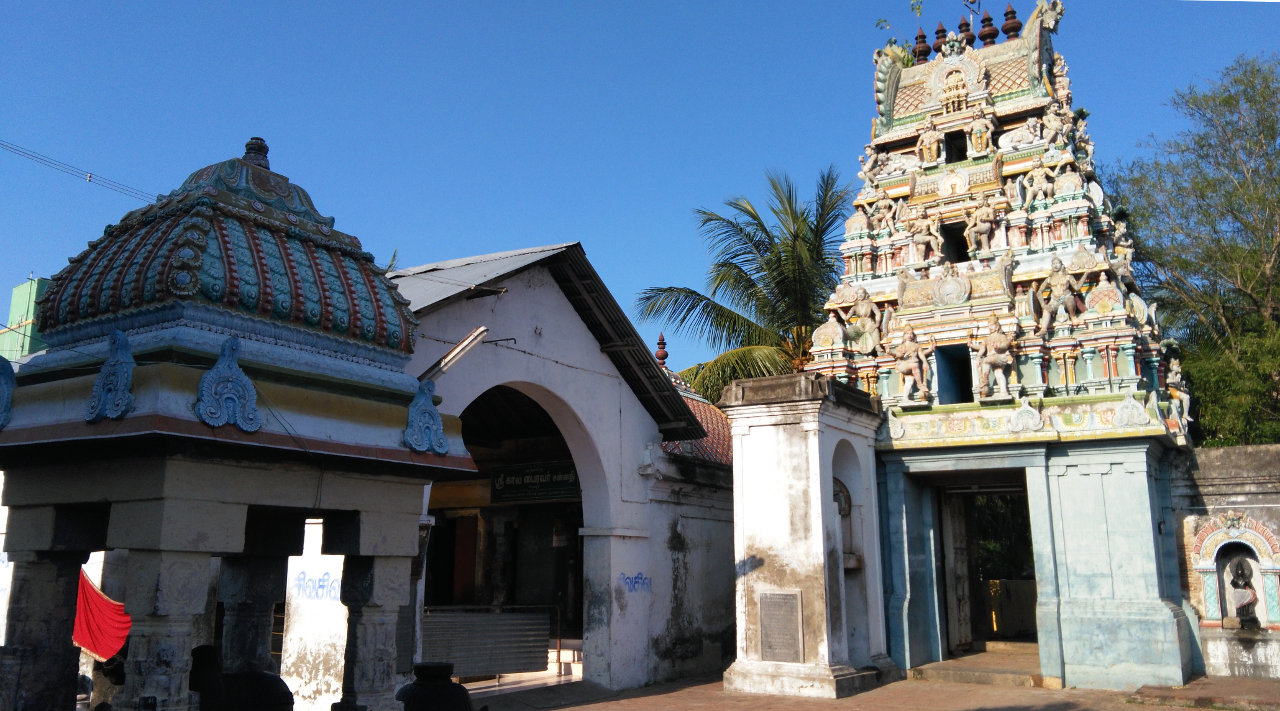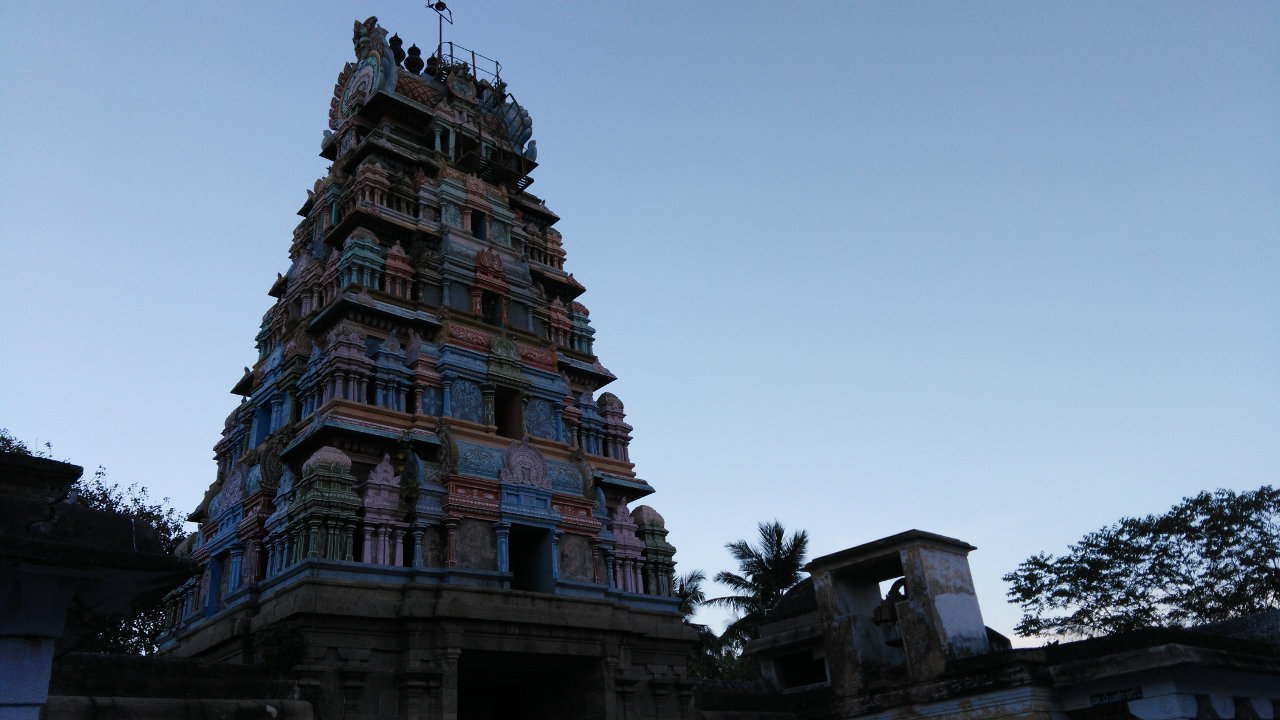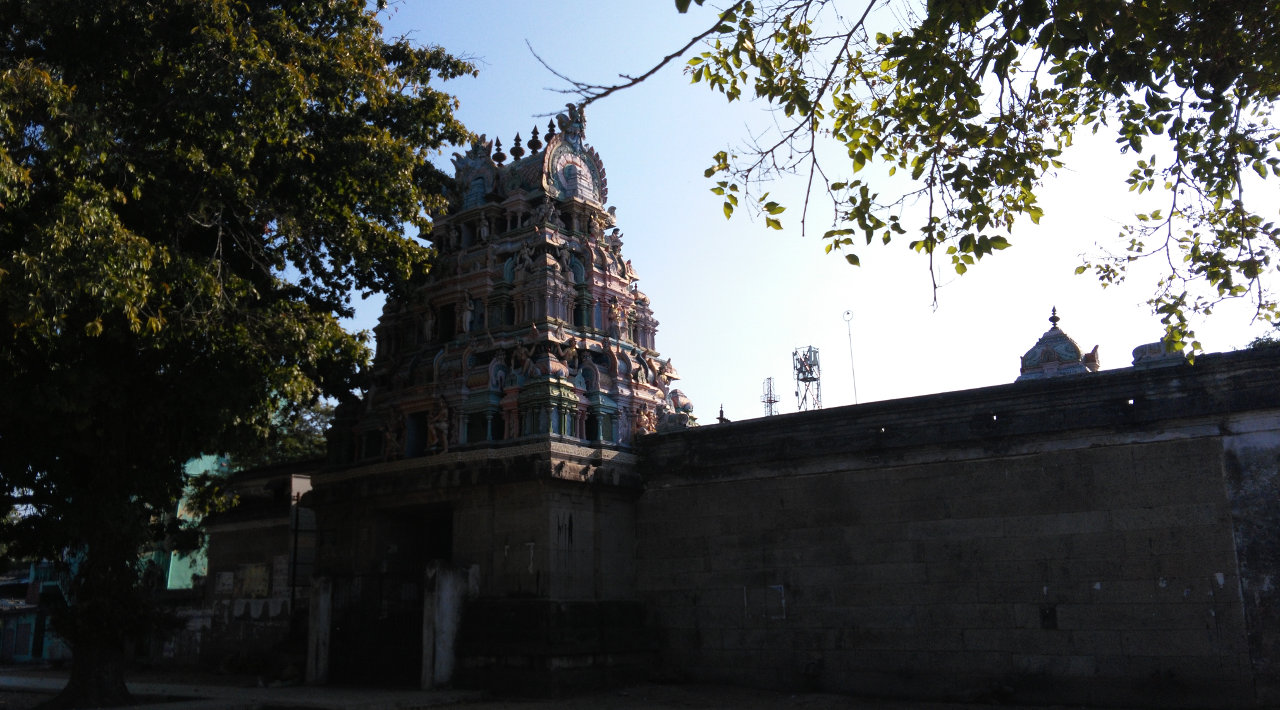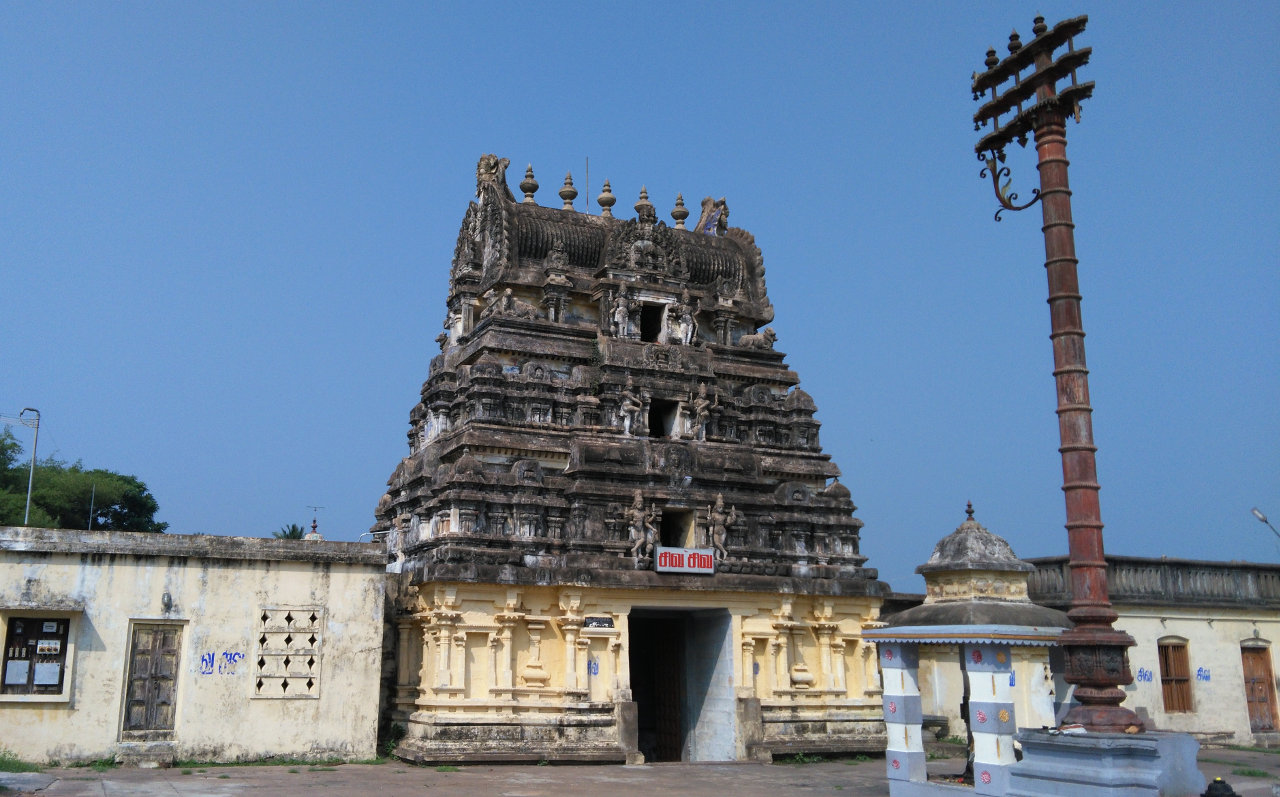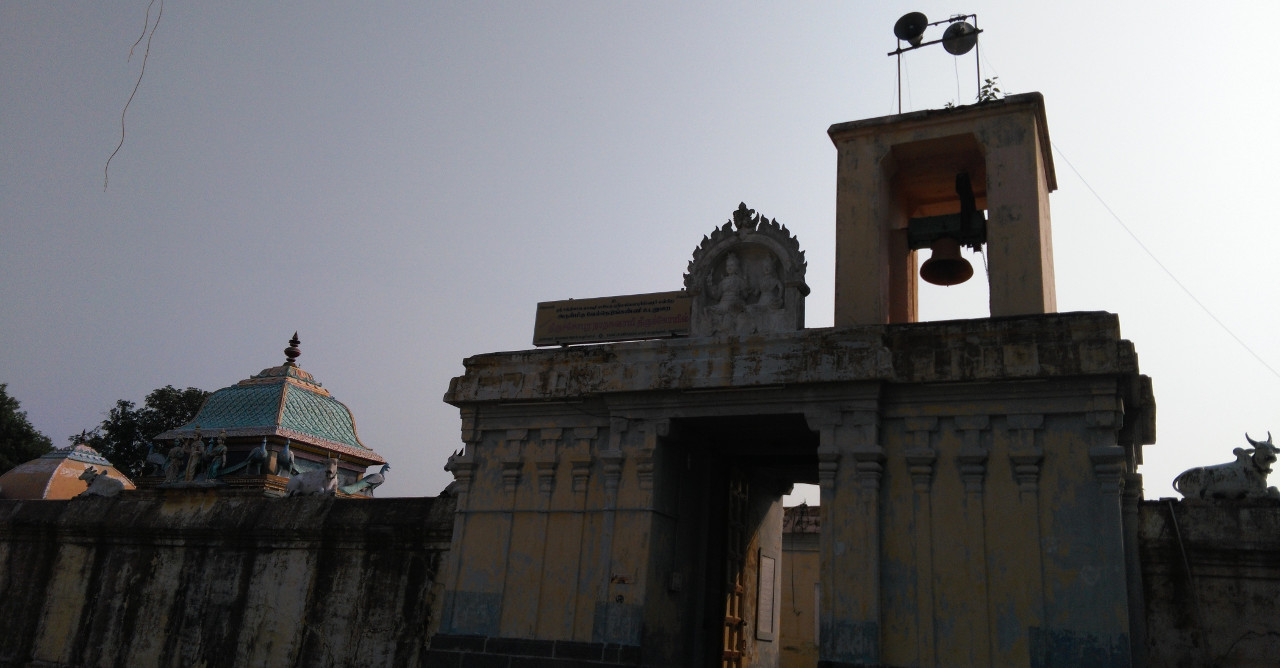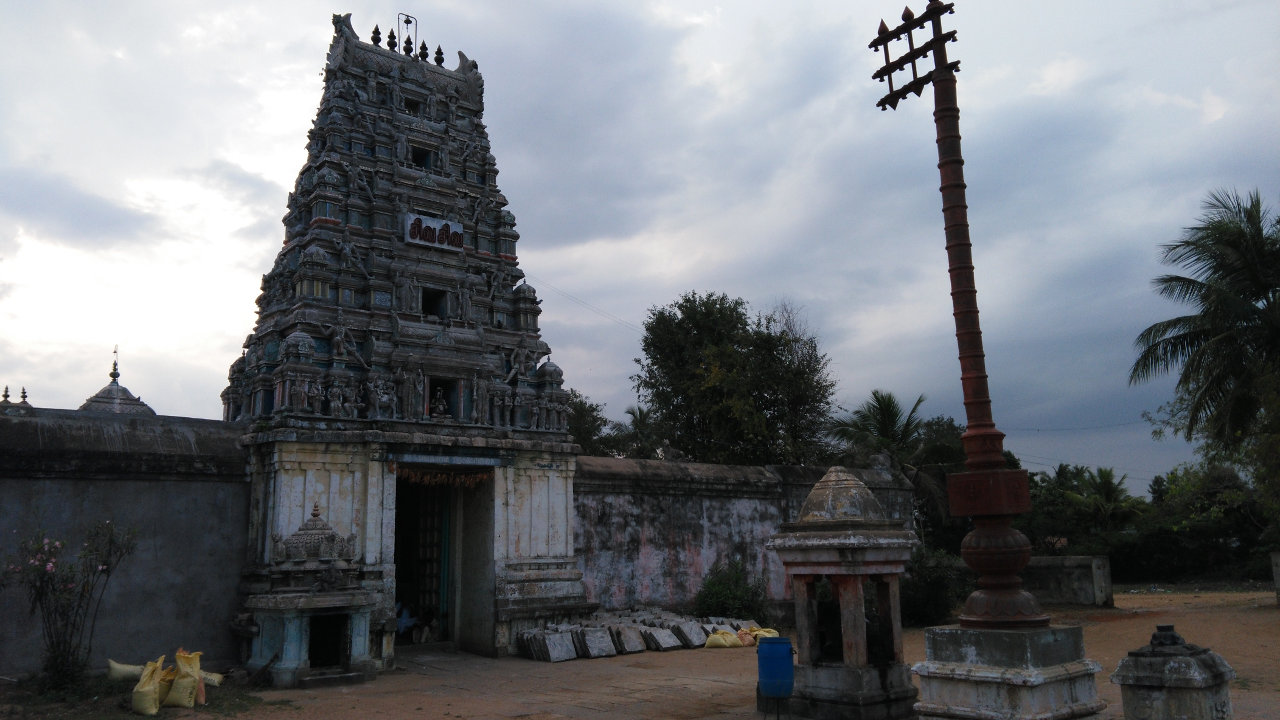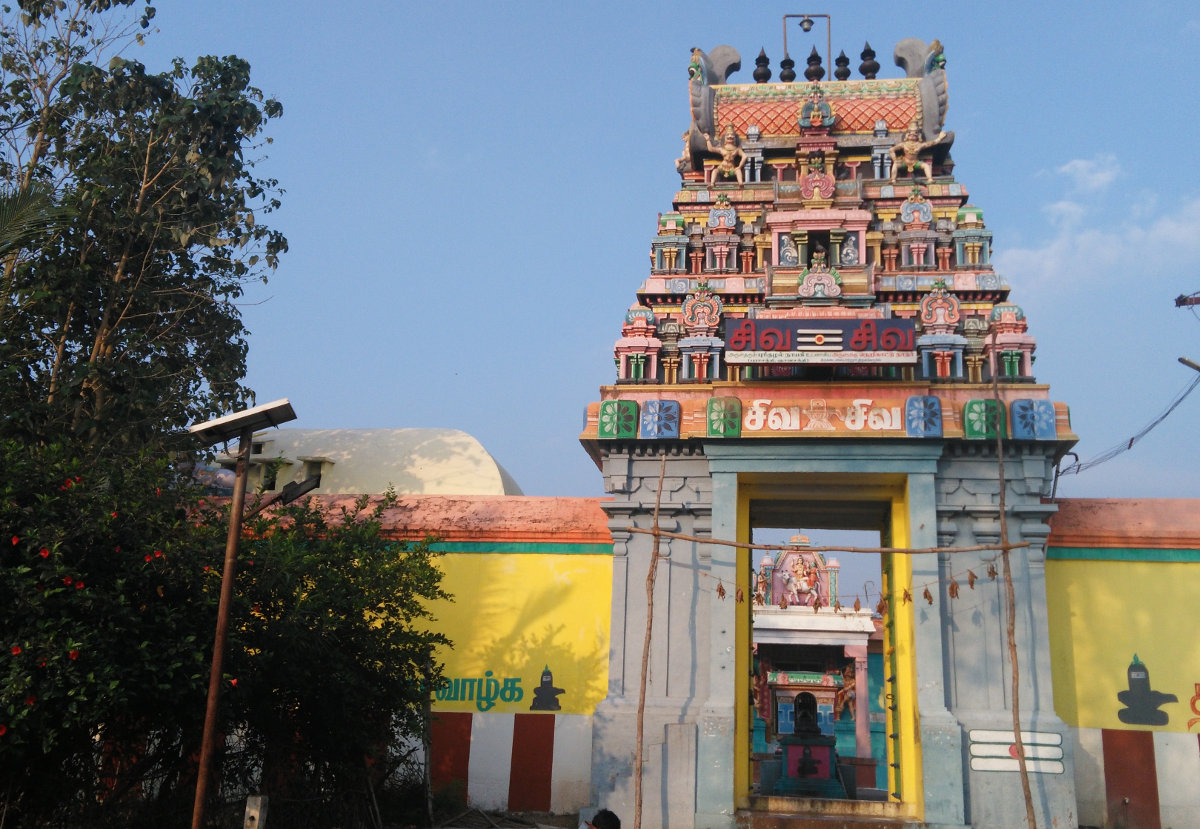Visited on: 31st August, 2018.
Location
Mela Kadambur is situated at a distance of about 32 kms from Chidambaram on Chidambaram to Kattumannar Koil route (via Eyyalur). It is about 6 kms From Kattumannar Koil and 5 kms from both Thekkiruppa and Omampuliyur.
Other Paadal Petra Shiva Sthalams near this pilgrimage site are - Thiru Omampuliyur, Thiru Kanattumullur (Kanattampuliyur), Thiru Naaraiyur, Thiru Erukkathampuliyur (Rajendrapatinam) and Thiru Kudalaiyatrur.
Another Shiva temple in Kezhak Kadambur, very close to this place is named “Kadambur Ilamkoil” or “Rudrapathi koil” which is a “Vaippu Sthalam”. This temple is a protected monument under the control of Archaeological Survey of India (ASI) owing to many beautiful sculptures adorning this temple.
General Information
| Moolavar | Sri Amirtha Kadeswarar |
| Ambal | Sri Vidyujothi Nayaki, Sri Jyothi Minnammai |
| Theertham (Holy water) | Shakthi Theertham, Siva Theertham |
| Sthala Vriksham (Sacred Tree) | Kadamba tree |
| Pathigam (Hymn) rendered by | Saint Thirugnanasambanthar-1 Saint Thirunavukarasar (Appar)-2 |
- This is one of the 276 Devara Paadal Petra Shiva Sthalams and 34th Shiva Sthalam on the northern bank of the river Cauvery in Chozha Nadu (Vadakarai).
- Lord Shiva in this temple is a Swayambumurthi (self-manifested).
- The vimanam (roof tower) of sanctum sanctorum has been beautifully sculpted completely in granite, resembling a magnificent chariot.
- This east facing temple has two corridors and main tower (Rajagopuram) has 3-tiers.
- Though Nandhi and Balipeetam are present, there is no flag post (“Kodimaram”) present.
History of the Temple
This ancient village is named Kadambur and temple as Karakkoil.
The village is named after temple’s Sthala Viruksham - Kadamba tree. Also, Kadambar ruled this region thus, the name.
It is believed that current stone chariot form of temple was built by the Chola King Kulothungan-I in the year 1113 AD, prior to which, it was a brick structure. The Chettiyars of Devakottai renovated this temple in later years.
Tamil literary sources describe nine categories of temple structures dedicated to Lord Shiva. They are – “Perung koyil”, “Karak koyil”, “Gnazhar koyil”, “Kokudik koyil”, “Ilam koyil”, “Manik koyil”, “Alak koyil”, “Madak koyil” and “Thoongani koyil”.
Amongst them, this temple is a Karakkoil type where the Sanctum Sanctorum (“Garbagraham”) is in chariot like structure pulled by horses with an enchanting appearance. Karakkoil in Sanskrit is Vijayam – meaning victory.
This temple is under the administrative control of Hindu Religious and Charitable Endowments Department of Government of Tamil Nadu (HR&CE).


